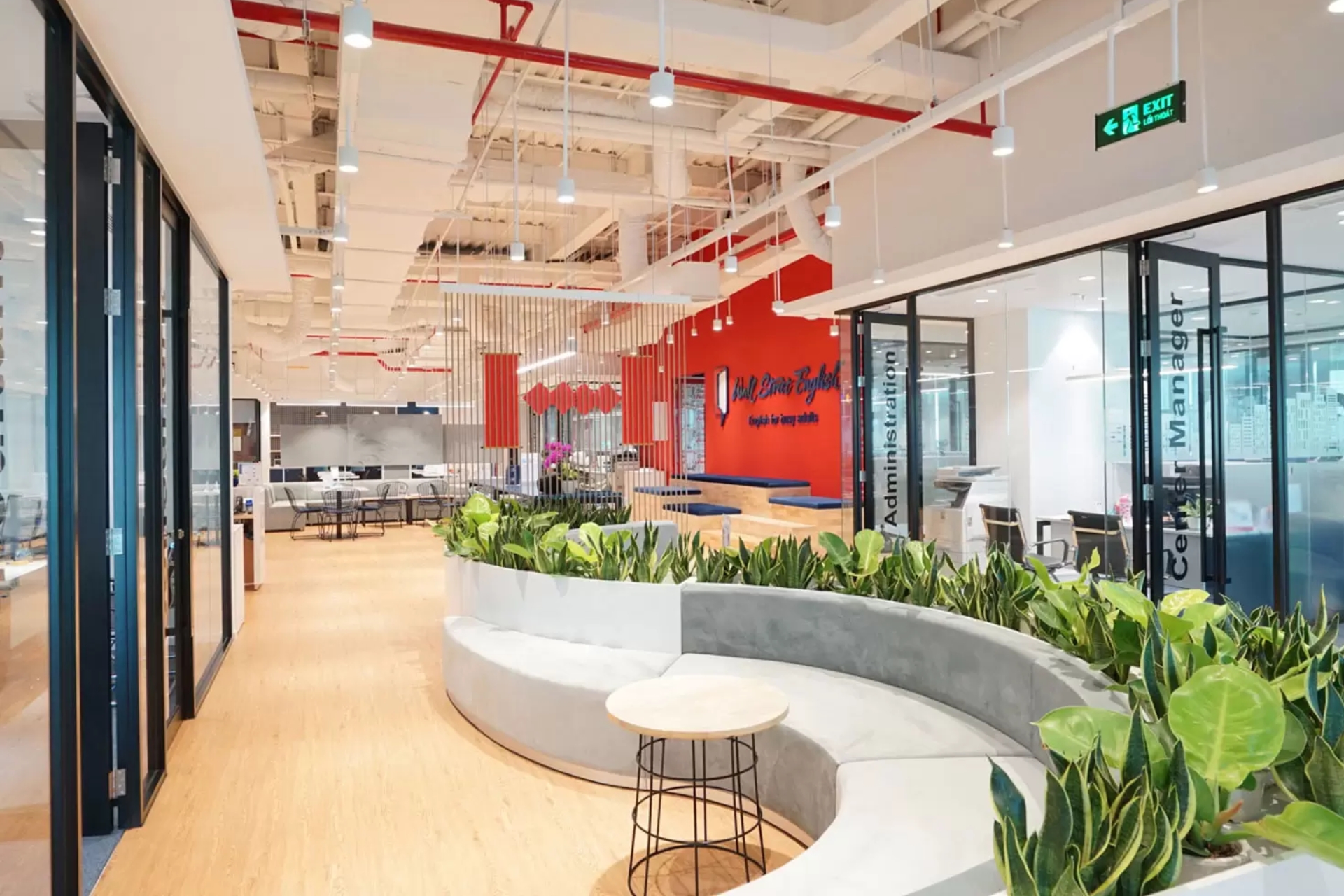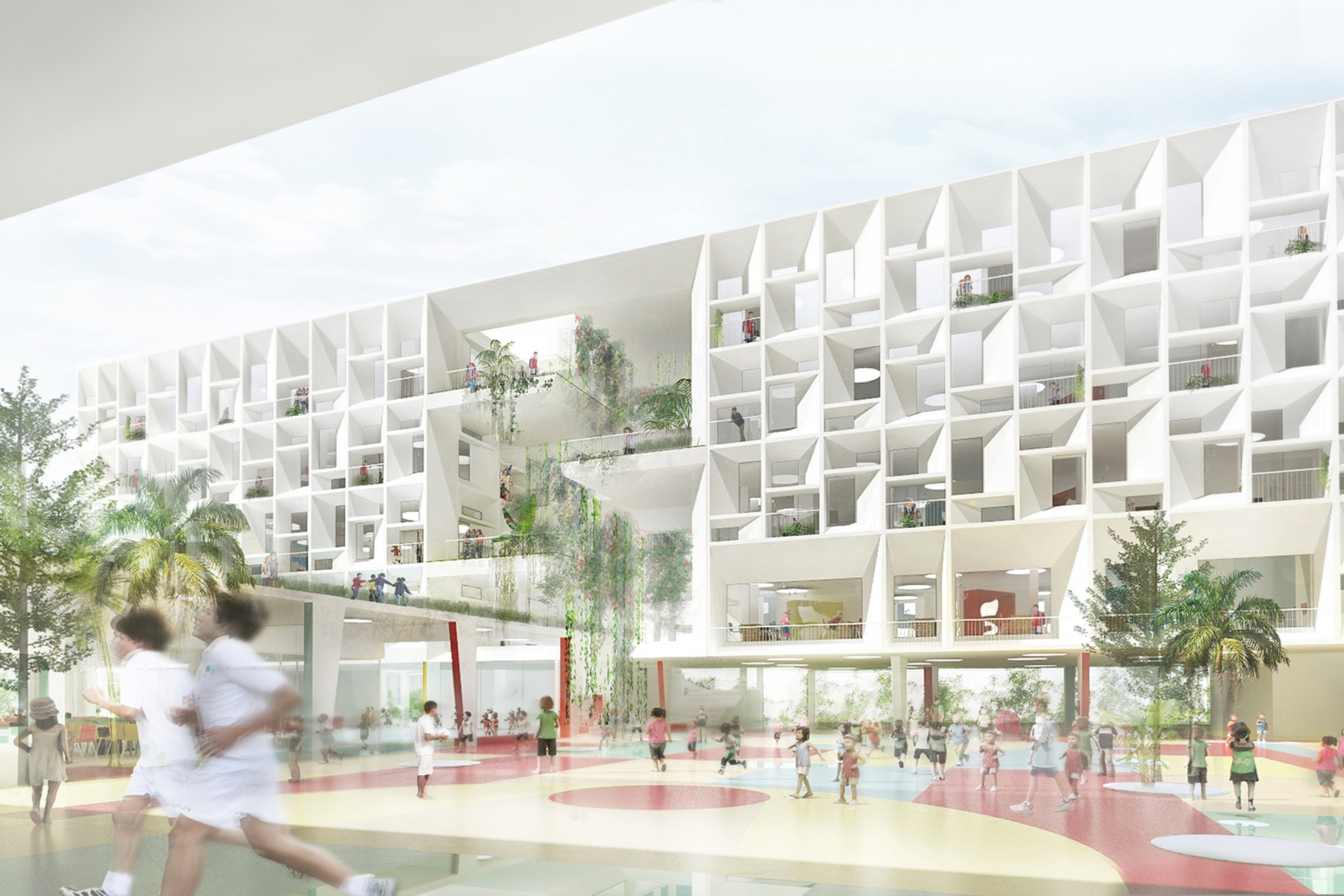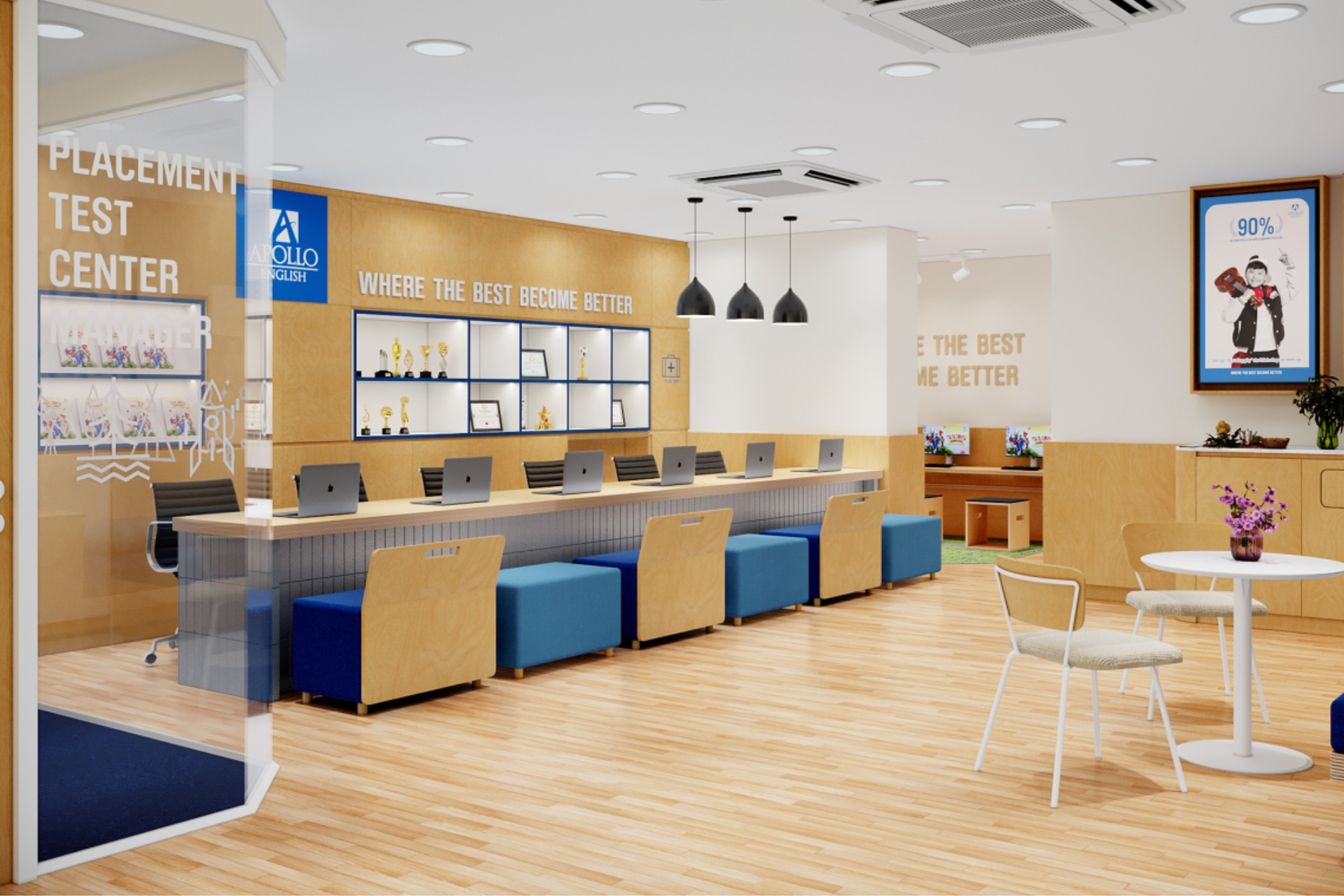
Features and Benefits of a Multi-Functional English Language Center Design
Besides curriculum and teaching quality, the learning environment plays a vital role. In the era of Education 4.0, multifunctional design has become a prevailing trend among English centers—not only to optimize space but also to create more flexible and engaging learning experiences than ever before. So what are the key characteristics of this trend, and what are the benefits of a multifunctional English center design? Let TECO walk you through the details in the article below.
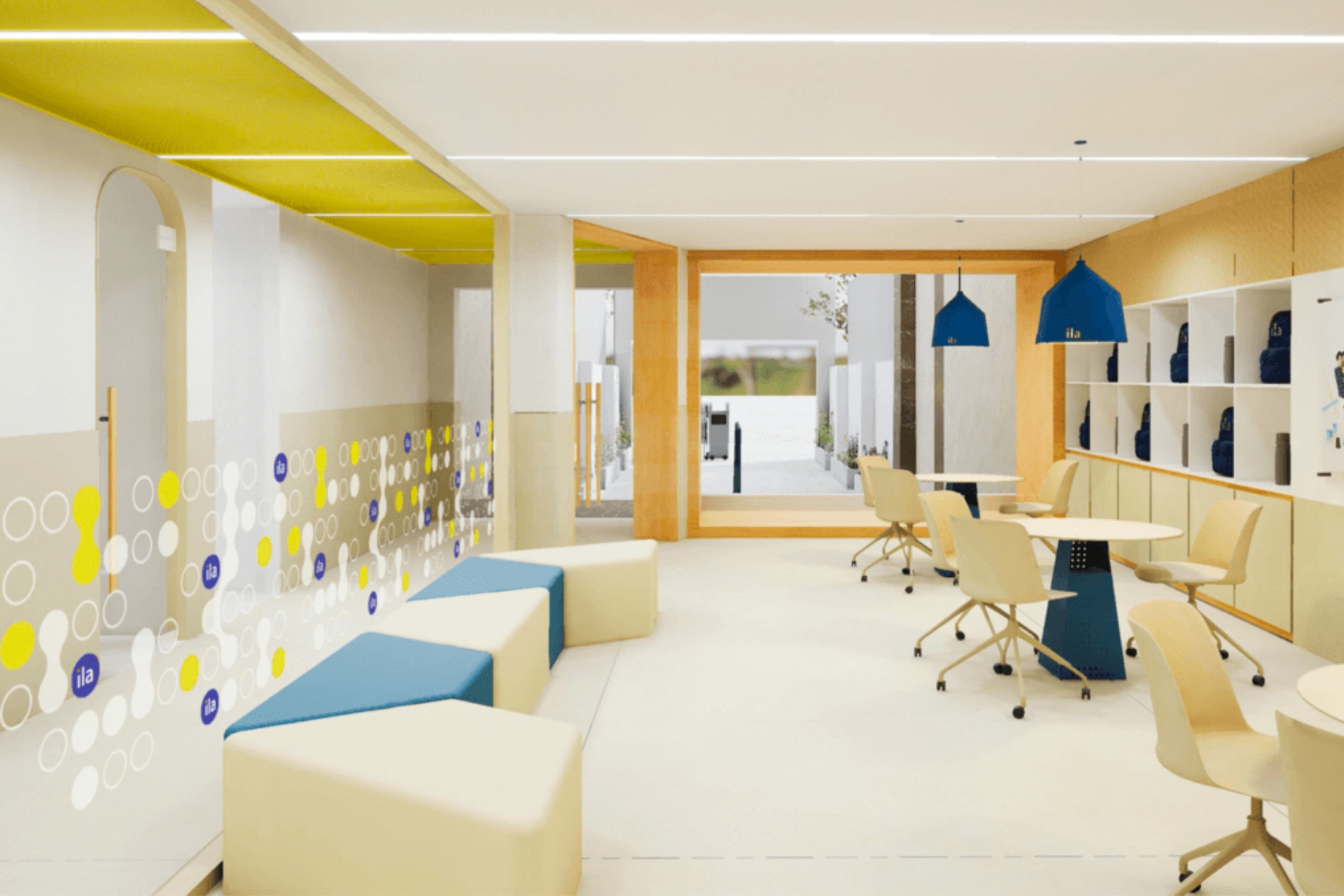
Key Features and Benefits of a Multifunctional English Center Design
Notable Characteristics of a Multifunctional English Center Design
A well-designed multifunctional English center typically features the following attributes, ensuring functionality, aesthetics, and a flexible user experience:
1. Flexible Space with Convertible Functions
Multipurpose Areas: A single area can be used as a classroom, common room, workshop zone, or even a small stage for extracurricular activities. This allows the center to optimize space without compromising the student experience.
2. Smart, Mobile Furniture
Lightweight tables and chairs that can be folded or adjusted in height make it easy to rearrange the classroom for various teaching formats: group work, presentations, 1:1 lessons, etc. Furniture should be safe with rounded edges and environmentally friendly materials to avoid injury, especially for younger learners.
Multi-functional storage: Cabinets and shelves should serve multiple purposes—storage, display, and space division.

The furniture in English centers should be smart, mobile, and adaptable.
3. Technology-Integrated Learning Spaces
Equip classrooms with digital boards, LED screens, and wireless projectors to facilitate interactive, dynamic teaching.
Design infrastructure to support technology, including floor outlets, strong WiFi, and adjustable lighting. The center must meet the requirements for modern, convenient, and accessible teaching and learning tools.
4. Encouraging Interaction and Creativity
A cozy reading nook with calming colors enhances focus.
Writable walls or pinboards give students the freedom to share ideas.
Open spaces foster informal interaction between teachers and students beyond class hours.
Motivational quotes or the center’s core values should be integrated into the wall designs, reflecting the center’s educational philosophy.
5. Maximizing Natural Light and Ventilation
Designs should prioritize large glass windows and reflective materials to fully utilize natural light, save energy, and create a pleasant learning atmosphere.
Incorporate greenery into the classroom to strengthen the connection with nature.
6. Safety – Friendliness – Easy Maintenance
Use durable, easy-to-clean materials like moisture-resistant engineered wood, washable paints, and non-slip flooring.
Pathways and functional areas must be arranged logically to ensure safety for both children and adults. Fire safety and emergency equipment should be installed along corridors to safeguard students in case of an incident.
7. Reflecting the Center’s Educational Philosophy
The design should not only be functional but also embody the center’s brand identity and teaching approach: modern – creative – student-centered.
Designs should align with various functional areas—main classrooms, self-study zones, reception and waiting areas, teacher rooms, restrooms, reading corners, pantry areas, or computer labs—while maintaining consistent brand recognition.

Brand identity is expressed through spatial design.
Benefits of Multifunctional English Center Design
Here are the standout advantages of multifunctional design that optimize student experience, operational efficiency, and brand impact:
Optimize Space Utilization
Multifunctional design enables one space to serve multiple purposes. This eliminates the need for renting more area while still supporting all necessary learning and engagement activities.
Flexibility for Various Activities
Spaces can easily convert from individual study areas to group classrooms. They can also be used for workshops, demo classes, or graduation ceremonies—offering dynamic and versatile training programs.
Promote Teacher-Student Interaction
– Open and flexible layouts support two-way communication, group interaction, and project-based learning.
– Encourage students to express ideas, discuss, and collaborate—key elements in language learning.
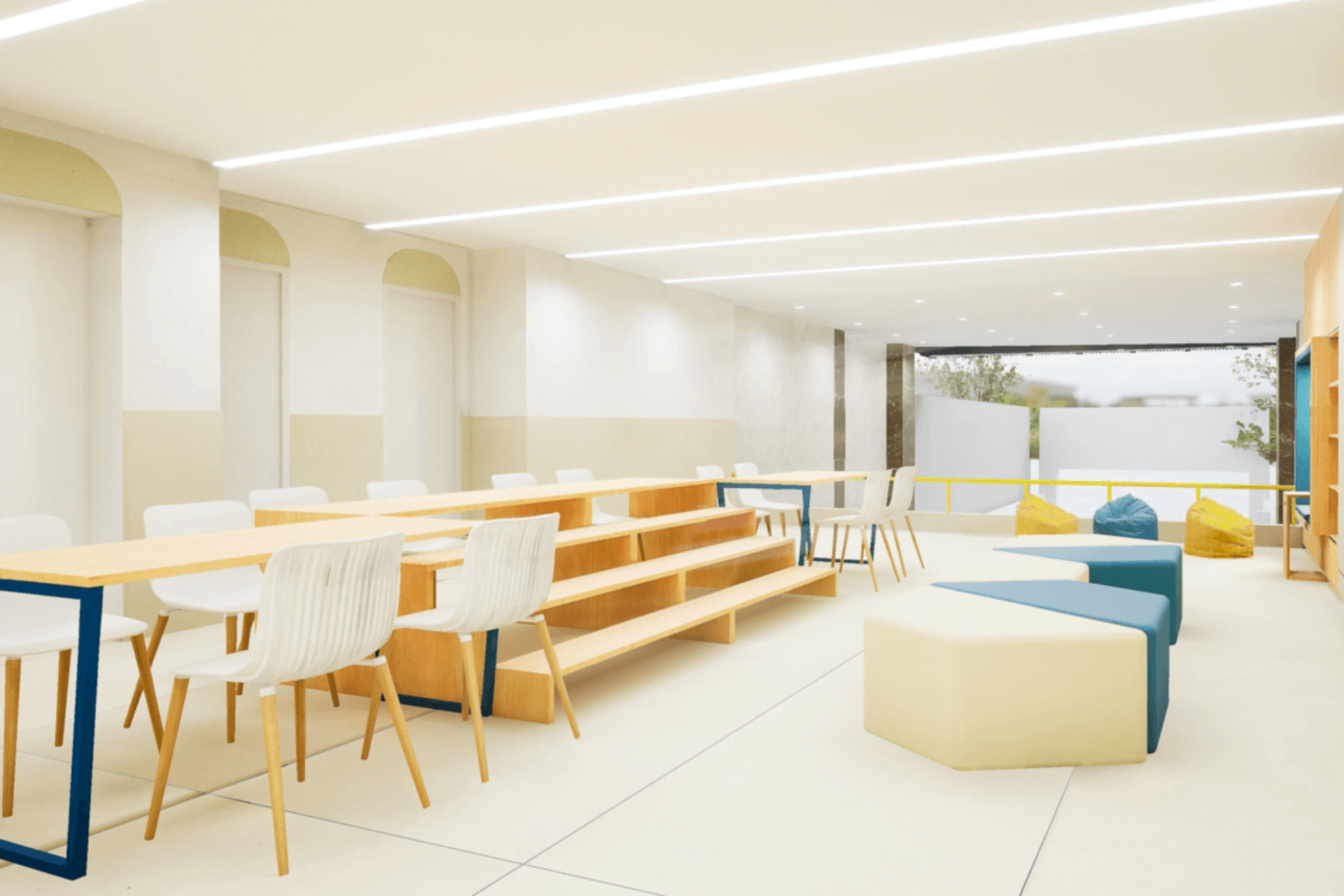
Open and adaptable spaces support idea exchange and collaborative learning.
Reduce Long-Term Investment Costs
– One-time investment serves multiple functions—no need for many separate specialized rooms.
– Lower maintenance and operating costs thanks to continuous space optimization and reduced waste.
Easy to Upgrade, Expand, or Repurpose
– When teaching methods or business models evolve, the spatial layout can adapt easily without major renovations.
– Extend the center’s lifecycle, keeping the environment fresh and aligned with educational trends.
Conclusion
There are many factors that contribute to creating a multifunctional learning environment at an English center. From flexible spaces and smart furniture to tech integration, optimized lighting and ventilation, and educational philosophy expression—TECO believes that investing in spatial design is truly an investment in the long-term experience and success of learners. We hope this article has offered valuable insights into multifunctional English center design to help you build a well-rounded and distinctive learning. environment.

